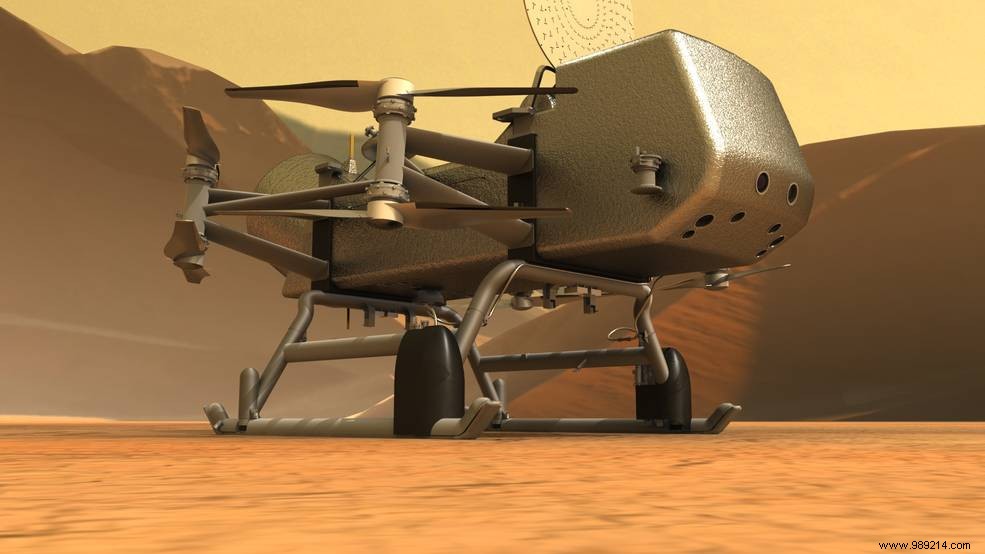Titan is one of the most intriguing places in the Solar System. NASA plans to send a mission there dubbed Dragonfly in the 2030s. It will be the first mission to explore the surface of this moon. The main objectives of this unique project were shared a few days ago.
Our planet aside, Titan, Saturn's largest moon, is the only body in the Solar System supporting stable surface liquids . The main difference is that they are not filled with water, but with methane and ethane. As such, Titan could be home to strange extraterrestrial lifeforms relying on different biological processes of those proposed on Earth. The moon is also coated in a thick atmosphere likely harboring complex chemistry involving organic molecules.
For all these reasons, like Europa, Enceladus or Mars, Titan is a prime target for many researchers. In 2019, NASA therefore selected a mission called "Dragonfly" which involves sending a drone to the surface to explore this strange world. Picture here a larger version of the Ingenuity helicopter currently exploring Mars alongside the Perseverance rover.
"Titan represents an explorer's utopia “, says Alex Hayes, one of the main players in this project. "The scientific questions we have about Titan are very broad, because we don't yet know much about what's really going on on the surface. For every question we answered while exploring Titan with the Cassini mission, we gained ten new ones “.
A few days ago, the Dragonfly team detailed the various objectives of the mission in the Planetary Science Journal.
Thanks to the Cassini mission, which explored the Saturn system for thirteen years, researchers have already detected organic compounds and other molecules that resemble those that would have existed on early Earth . The drone will therefore examine whether the conditions are really conducive to the installation of life, by studying the global cycle of methane, the way in which the atmosphere interacts with surface materials and how water can mix with organic matter.
One of the objectives of this mission will also be to search for chemical biosignatures that could indicate past or present life . If so, then it will have to be determined whether this life could be similar to that of Earth relying on water or whether it uses liquid hydrocarbons available in Titan's lakes, seas and rivers.

To try to get all the answers to these questions, the team has selected a landing site in the middle of the dunes near the equator where this rotorcraft can sample organic sediments and water ice.
Dragonfly will stay in each location for a full day (which is roughly sixteen Earth days) before flying off to other areas. Titan's atmosphere is four times denser than Earth's and gravity is seven times weaker , each "jump" of this rotorcraft could allow it to travel about fifteen kilometers. Little by little, the mission will head towards the Selk crater , a crater about 80 km in diameter likely to contain traces of water mixed with organic matter.
Time-wise, the Dragonfly mission was originally scheduled to launch in 2026 with a landing on Titan scheduled for 2034. However, the Covid-19 pandemic eventually forced NASA to revise its plans. planes. Its launch is now planned for 2027 . On the other hand, it is not yet known whether the date of the landing will also have to be postponed.